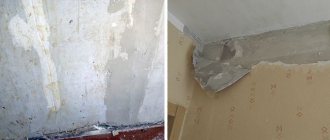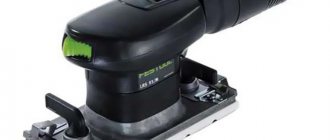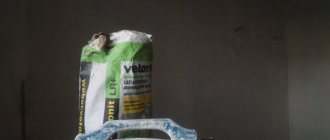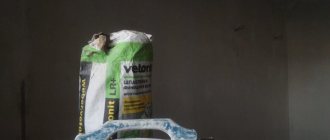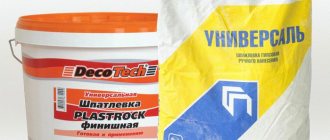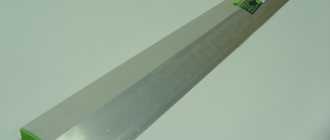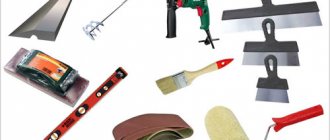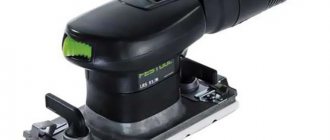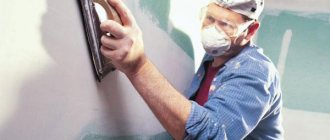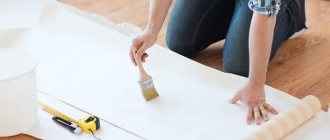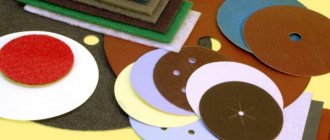How to choose a professional construction spatula for wall putty
A professional spatula for finishing walls should be steel. Moreover, its thickness is no more than 1 mm. Its fabric should bend and have maximum rigidity.
Disposable spatulas are easily recognized - they are complemented by a black plastic handle and a metal work area.
Its thickness should not be more than 1 mm. Such a tool will begin to deform at the most minimal load, and it is extremely difficult to achieve smooth walls with its help. It does not level the surface, but only makes defects more noticeable, repeating and highlighting them against the general background.
Often on the market you can buy painting tools with a plate, which range in width from 80 to 450 mm. There are so many craftsmen, so many opinions, and each defines the most convenient spatula differently; there are the following sizes of putty spatulas on the market:
- classic, standard tool, which stands out with a width of 200 to 250 mm;
- additional, width from 80 to 100 mm;
- corner spatulas for putty, the prices of which also vary.
To process internal and external corners, it is rational to purchase professional spatulas. They are distinguished by two cavities located at an angle of 90 degrees.
For internal and external corners
Such spatulas are not in great demand because their operation requires mastering a certain technique, and the corners in the room must be even.
Many painters prefer not to spend extra money on buying special corner spatulas, and create them with classic variations.
Painting and facade spatulas
Between spatulas used for finishing facades and painting work, the main difference is the rigidity and thickness of the steel blade. This tool is mainly used for filling wall and ceiling surfaces, or applying decorative plaster.
Types of spatulas
A good spatula for puttying walls is used when performing a wide variety of construction and repair work. To make a tool plate, the manufacturer uses different materials.
They often choose metal, plastic or rubber. Today on the market you can buy spatulas that are used for highly specialized purposes.
To process the load-bearing surface, it is rational to use products with a flat surface, a holder made of plastic or wood, or a metal plate.
The material discussed in the article varies, so its price will be based on the manufacturer and type of material used.
Facade
Despite the fact that this tool is called that, it can be used both for facade processing and for interior finishing of load-bearing structures.
A professional spatula for putty has a more massive blade, which is made of durable steel and cannot be deformed during use.
Using such a tool, you can easily apply the building mixture to the surface to be treated. The working surface of the spatula resembles a quadrangle with two parallel and two non-parallel sides, thirty cm or more wide.
Facade
A façade spatula is most often used simultaneously with a painting spatula. If the layer of putty will be applied with one solid ball, it is more convenient to collect the building mixture from the container with a more compact analogue. Depending on the size of the ball, the consumption of finishing putty per 1 m² will depend.
At the stage of applying the last ball, the spatula is used as an additional element. The construction mixture is placed on it, and using a painting spatula, it is scooped up in small portions and applied to the surface.
Painter
For finishing, it is more rational to use a paint spatula. Using it you can perform the following manipulations:
- make the surface as smooth as possible after applying the putty material;
- mask the seams between plasterboard layers;
- earn defects and notches;
- handle complex structures.
Like the façade spatula, it has a trapezoidal shape and is complemented by a plastic or rubberized handle.
Painter
- the minimum width of such a spatula is 20 mm;
- thickness. The plate of the painting tool is, as a rule, thinner than that of the façade analogue;
- level of elasticity. The tool is distinguished by a more elastic and bendable blade;
- material. For the production of paint spatulas, alloy steel is used, which is resistant to corrosion due to the chromium content, while the other analogue under consideration is made from steel with a carbon content of over 0.6%.
Painting tools are divided into the following types:
- for professional and non-professional work;
- those that can be used once.
Metal scraper
If you still don't know which spatula to choose for putty, don't forget to buy a scraper.
It has a narrow scope of application and is used to remove excess building material from the surface.
Scraper
Its feature is considered to be the thickest blade, which does not deform; it is made of durable metal. This spatula has a relatively small width of 50 mm.
Rubber
Most often it is used for rubbing seams. This is a solid layer of rubber that varies in type and shape and is used to mask scratches and dents in fiberboard flooring.
But most often, such a spatula is purchased for grouting tile joints, and you don’t have to worry about its integrity during operation.
Rubber
Rubber can never affect the quality of the tiles, no matter how hard you clean them. The spatula perfectly follows all the unevenness and roughness of the surface, so it is ideal for grouting joints.
For tiles
This type of spatulas is not particularly distinguished by its wide range. They can be divided only by a couple of characteristics: the size of the teeth, which are used to determine the ball of glue used, as well as the shape. The larger the ball, the longer the putty dries. The latter differs only in width.
In the first case, a spatula with a width of 20 cm is used, in the second the width may be larger. Such differences can be characterized by different areas of application.
Tools with teeth are used when working with small-sized rectangular wall plates made of baked clay, and a falcon-shaped tool is used for massive slabs that decorate floor and wall coverings.
For tiles
Regarding the height of the teeth, the following standard sizes are available on the market: 0.6, 0.8, 1, 1.2, .4 mm. If you need a larger tool, then purchase a classic spatula.
The thickness of the tile adhesive layer may increase if it is applied simultaneously to both the facing surface and the tile. But only the directions of application of the material should be opposite.
When working with rectangular putty plates, you should also pay attention to the rubber spatulas used to rub the seams. By the way, they are used as spatulas for car putty, which also vary in width.
Classic sets of such tools consist of several types of spatulas. They are considered semi-professional and working with them is extremely tiring. Most likely, it is more rational to use them for processing small objects and large tiles.
Selecting a spatula by size
Spatulas may differ in quality, price and material. Professional tools are more expensive, but they will “survive” more than one repair. Cheaper and simpler products should be handled with care.
When choosing a tool, you should pay attention not only to its cost, but also to its size, namely, the width of the working surface. An incorrectly sized spatula will bend and eventually simply break, and the work itself will be performed poorly.
Experts recommend buying a facade or painting spatula with a working blade width of 300-400 mm. But here too it is worth considering the surface area. If you need to apply rough putty, you will need a model with a narrower blade, and for sealing cracks and for areas with corners - a very small one.
Note! If the surface has deep holes, then a large tool is needed to eliminate defects and apply a large layer of material.
Putty Tool Dimensions
To process walls, it is rational to choose the tools required in terms of dimensions.
Wide for leveling
To level an uneven base and easily putty the walls, use:
- wide type for facades (up to 600 mm);
Wide
- rule (1500-3000 mm).
Rule
Thanks to this, it is possible to eliminate the most severe and massive defects. They are used to apply the so-called initial putty mixture, and the material is applied in as thick a layer as possible.
Is it convenient to putty with medium
Medium putty tools (with a width of 150 to 250 mm) are used to process large irregularities and dents that remain after the initial treatment.
This spatula allows you to create the smoothest putty layer possible. The main task of such a spatula is to fill holes and eliminate visible defects.
Average
After processing, the spatula may leave minor protrusions, which are removed after complete drying using special ribbed paper.
Narrow for puttying
Narrow (50-100 mm) is suitable for processing minor depressions that remain after using the previous material. After its use, there are practically no flaws left on the surface.
Narrow
It is not rational to use this tool so that the surface is as smooth as possible, because it completely repeats all the chaotic irregularities on the walls. However, it is often used to treat hard-to-reach areas. Using this tool, you can collect the mixture from the container and apply it to the work surface.
Criteria for choosing a quality spatula
If you need to choose the most suitable option for a tool, it is not enough to just answer the question of how to hold a spatula correctly; here you have to consider a number of criteria by which such accessories are selected, namely:
Special interest will need to be shown in the material that was used in the production of the blade itself, as this has a direct impact on the subsequent durability of the device. Most often, blades for spatulas are made of stainless steel, which makes it quite easy to subsequently clean their surface from frozen excess material.
Choosing a tool for applying finishing putty
In order not to be completely confused by the presented options and to purchase a product that will perform the assigned tasks, we recommend that you pay attention to these characteristics. First of all, you should pay attention to the handle.
It should be comfortable and it is better if there are no flaws or sharp protrusions on the surface. If they appear during operation, it means you bought a low-quality product.
Don't buy spatulas that are too long or too narrow. They will be inconvenient to use during operation, and they will be extremely difficult to use.
To level the surface, it is more rational to purchase a product that is shaped like a trapezoid. Tools in the form of triangles or droplets are not so convenient.
Shaped like a triangle
Moreover, they performed poorly during operation. The blade of the working tool should be smooth, at the same time moderately flexible, and not deform with minimal pressure.
Ceramic brick is a material that has been successfully used in construction and renovation for a long time.
Putty can almost perfectly level the surface, as well as make it strong and durable.
Crushed stone is mined by crushing rocks and metallurgical waste.
If, while pressing on the blade, it begins to bend strongly during operation, the construction mixture will roll off such a spatula, and it will even be difficult to apply it to the wall, not to mention leveling it. Spatulas with excessive rigidity will undoubtedly become deformed during operation.
The correct spatula should be equipped with a blade that will spring slightly when pressed. To apply the finishing putty, you can use a tool whose blade is made of stainless steel.
This will make it easy to clean after work and will ensure there is no corrosion that will negatively affect the finish. A spatula with an iron blade and metal coating is considered a low-quality product and requires the most careful care to avoid the formation of rust.
It can negatively affect not only the material, but also the surface being treated. Pay attention to the blade. It should not be sharpened; such products can be effectively used for other types of work.
For more information about choosing a spatula, watch the video:
Rules for puttingtying internal and external corners of walls
You need to figure out how to use an angle spatula. For example, joints in modern houses often fall to a distance of about 1 cm or even more. You'll have to plaster them from the very beginning.
In a situation where the walls are quite suitable, the plaster does not need to be replaced, but the joints have failed a little, which becomes noticeable to the naked eye. Experts can recommend various methods to resolve problems.
It is possible to use a corner profile or a construction square. There is also a method that can be performed by a person who is far from construction skills and special skills at home. Should be purchased:
- materials for putty;
- corner spatula;
- gypsum plaster;
- profile;
- stepladder;
- level.
Using an angled spatula is quite simple; don’t be intimidated by your lack of skill. If plasterboard sheets were used during the repair work, then the profile was probably left in stock. However, you should look for whole products; pieces will not work. Otherwise, they will need to be purchased at a very affordable price. It is also worth considering some nuances:
- You should start from the top half of the wall. Take the profile and an angled spatula, place it with its legs towards you so that one side of the spatula rests firmly on the profile, and the other touches the other surface.
Important! The tool must touch the surface of the wall, move freely and easily, without causing difficulties.
- The profile should be fixed using dowels or self-tapping screws. One end is firmly fixed, while the other remains free to move.
- Strengthening occurs in such a way that one side is positioned vertically and strictly level. Also in such a situation, you can use a plumb line to check. Even the smallest blockage to the side will subsequently be noticeable, which will make the room unattractive and uncomfortable.
- Experts recommend using a level for vertical installation, while fixing the other edge of the profile. Ultimately, it will be possible to use a vertical guide when working with the tool and creating a perfectly even angle.
- The solution should be of sufficient thickness, not spread and adhere firmly to the surface. It is advisable to add a gypsum composition to the mixture. However, you need to remember that you should work with the mixture quickly so that it does not have time to dry out; it also sets in a few seconds. You may not have time to level the surface.
Important! The most critical moment is considered to be the one when you have to pull out the solution or mixture with an angle spatula. The tool should rest only on the profile, and not on the wall itself. When the work is done correctly, you can straighten the corners in one go and make the room attractive and neat. After this, you can remove the profile guides and apply putty evenly along the corner.
To putty joints, you should also consider a few tips from professionals:
- when working with putty at the finish, you should firmly hold the tool at an angle of 20 degrees from the surface of the walls;
- the mixture must be applied from left to right and from top to bottom;
- movements should be fast and uniform;
- the tool must be held by the handle, which does not cause discomfort, it should be comfortable;
- To obtain a flat surface, you immediately need to press the corners of the canvas with your free hand.
It is necessary to understand that you should not try to save money on repair tools; only in this situation will it be possible to make truly high-quality repairs and achieve moral satisfaction.
How to clean the tool
There are many videos and articles on this topic on the Internet. But these two options are considered to be the most common.
- make a couple of slits in a tin can, and in the end you will have an accessible and effective device for cleaning tools;
- arm yourself with a wet rag (to prevent dust from appearing) and an ordinary washcloth to clean scale from stainless utensils.
For effective cleaning, you just need to delicately treat the contaminated surface with iron filings.
It is rational to use a wet rag to brush away falling dust particles. After a few minutes of manipulation, the instrument will look like new.
Even old, long-hardened putty can be easily cleaned in this way. Some people recommend using sandpaper, but it can damage the delicate surface of the spatula. This method can only be used by professionals who know how to control the intensity of friction.
